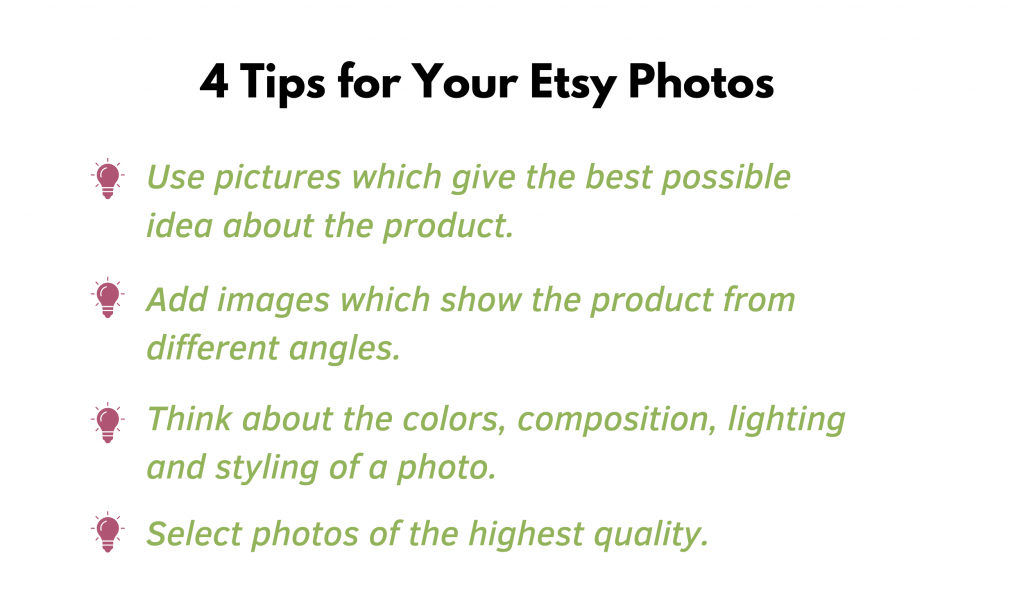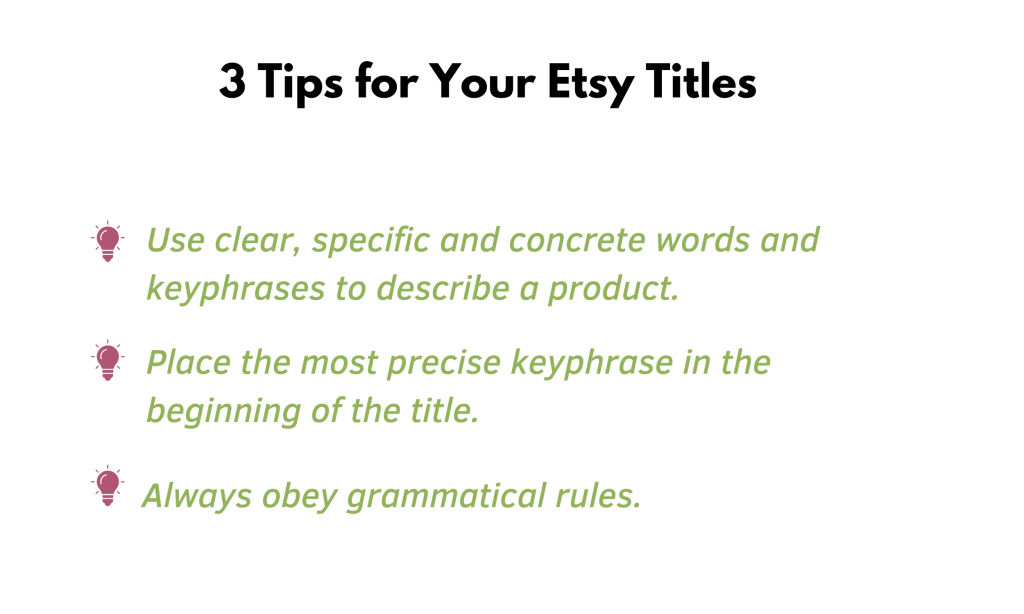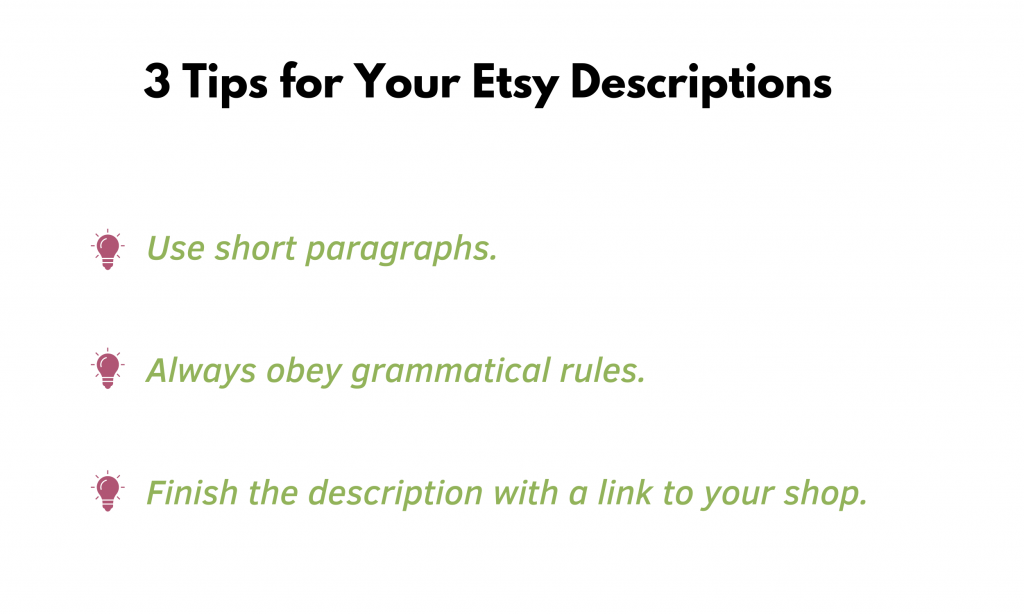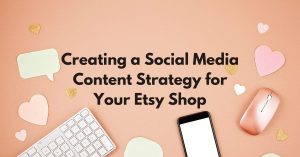Low fees, ease of use, access to tens of millions of potential customers, and the possibility to operate in niche markets — these are just some of the advantages of the e-commerce platform Etsy. For the buyers, there is an abundance of unique boutique and handcrafted products. All this holds the promise of large sales volumes. But is it really so easy to sell on Etsy? What are the shortcuts to commercial success on the platform? Read on if you would like to know what are the five most important aspects to consider.
Table of Contents
1. Sell Products Which Are in Demand
One of the main mistakes that an artisan seeking to open an Etsy shop could make is to offer products that are not in demand. Who wants to invest money, time, and materials to create and optimize a product that no one needs? Lack of demand is a guarantee for poor financial results.

Therefore, before posting your first listing, it is a good idea to conduct some research and find out what is it that Etsy customers are looking for. Discovering the answers to the ‘how’, ‘why’, and ‘when’ is also important. You don’t need to be a great inventor in order to succeed. All it takes is to identify one customer need, study it well, and come up with a product that can meet this need better than the products offered by competitors.
Here is how you could approach this issue:
Study several successful shops and the goods that they offer
This will allow you to find out their advantages and disadvantages which, in turn, could help you figure out how to develop a more competitive offering.
Get familiar with your competitors’ listings and study their sales on Etsy. This will give you an idea of which products are their bestsellers.
Take a look at the customer reviews. They will quickly tell you how well your competitors meet the clients’ needs. Ask yourself whether you could offer a better product.
Think about the profile of your target customers and how to best meet their needs
Pay attention to the communication channels that customers use (forums, user groups, private messages between you and your clients, and the reviews that customers give to you or other online vendors).
Analyze carefully the customers’ moods, wishes, and suggestions. This could inspire you to think of improvements for products that already exist on the market.
Use software tools like Koalanda to analyze the searches for certain keywords, as well as the available products
This is how you can determine the market potential. The analysis will most likely show you market niches with few available offerings but with very good potential in terms of the number of conducted searchers. The Keyword Tool in Koalanda can be very useful for this analysis. Here you can find the tutorial for the Keyword Research Tool.
2. Create Attractive Listings
Online vendors face some unique challenges when marketing their products. In brick-and-mortar shops, customers can see, touch or even try a product. They can also interact directly with the person selling the item and receive detailed information about it. In a virtual setting, it is more difficult to engage and influence consumers. This necessitates the use of different tools and tactics.
If you are already using Etsy, you probably know that the listings you post are the storefront of your shop. They create the first impression about your brand and your products and oftentimes this first impression is the most important factor. This is why you need to create persuasive listings which provide as many details as possible and inspire a desire to buy your product.
An Etsy listing is comprised of several elements:
Images
A study among Etsy users has shown that visuals have the greatest impact on purchasing decisions on the platform. Product images turned out to be more important than pricing, delivery costs, and client reviews.
This is why, when selecting the ten photos to publish with a listing, always keep the following in mind:
- Use pictures that give the best possible idea about the product. Clients rely on visual information to get a clear idea of the item being sold.
- Try to add images that show the product from different angles and in different settings. Close-ups reveal the details and provide information about the quality of craftsmanship. The photos which show scale — for example presenting the product next to a measuring tape — are also very useful.
- The colors, composition, lighting, and styling of a photo are all visual stimuli that could invoke positive or negative effects.
- Only select photos of the highest quality. Low-quality images (faded, with low resolution, poor composition, poorly selected color scheme, lacking focus, with the object merging with the background) will most certainly discourage potential customers.

Indeed, most artisans and entrepreneurs using the platform are not well acquainted with the intricacies of product photography. If you don’t want to compromise on image quality, you could commission a professional photographer who will execute the task with precision and creativity. You could also spend some time taking photography courses and video tutorials. This is a more affordable alternative that will help you upgrade your skills and obtain a certain degree of self-sufficiency.
Title
The title is the second element of the listing that is viewed by users. This is why the information communicated in the title should confirm the visual information of the first image published with the listing. If there is a discrepancy, potential buyers will likely get confused and move on.
When writing titles, consider the following:
- Use clear, specific, and concrete words and keyphrases to describe a product. Make sure the words are simple, well-known, and used by people on the platform. Never forget that the title will be read by others.
- Place the most precise keyphrase at the beginning of the title. People may get confused if it is placed at the end.
- Titles need to be grammatically correct. Errors will reflect poorly on your shop.

Titles are very important for the Etsy algorithm and need to be optimized, as we will see in the next blog post.
Description
If you have done well with the visuals and the title, surely people will be interested and some of them will click on the listing to get to the additional information available in the description. In the description, you need to communicate verbally the information that you have already communicated via the images.
Use short paragraphs and always obey grammatical rules. Use the description to make potential customers interested in acquiring the product. Your words could inspire people and help them imagine what it would feel like to use your product.
It is a good idea to finish the description with a link to your shop, thus inviting people to take a look at your other listings.

The description, as well as the title, should be written with the Etsy algorithm in mind. More on this in part II 🙂
Try to think about these two key factors when creating your products or posting your listings. And don’t forget to read the other three factors for Etsy success next week on Koalanda’s blog.






Pingback: Five Key Factors for Etsy Success (Part II) - Koalanda Blog